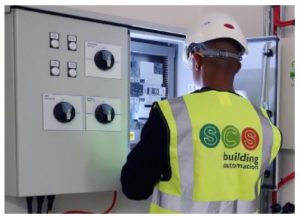Smoke control systems must remain operational to protect occupants of high-rise buildings
The importance of fire safety in high-rise buildings is often overlooked, however, delays to fixing inoperational systems can lead to serious consequences. It recently came to light that Grenfell Tower’s smoke control system had been inoperative for over a year before the refurbishment. Moreover, the tenant management organisation (TMO) had known about this and done nothing to mitigate the risk for the building occupants. Unfortunately, this came as no surprise to those of us within the smoke control industry. In our experience, it is common for clients to leave reported defects for many months before authorising corrective action.

In their March 2020 Fire Engineering Thematic Technical Report that audited buildings with mechanical smoke ventilation systems, the London Fire Brigade found that 20% of systems inspected failed to operate which would indicate that the problem with fire safety in high-rise buildings may be widespread.
There are some common themes for high-rise residential buildings that can contribute to a catastrophic system failure of the type experienced at Grenfell Tower.
In a recent article written by Group SCS Director Allan Meek, featured in IFSEC Global; he looks at these and offers advice on avoiding the common pitfalls:
- Through using a competent smoke control specialist.
- Regularly carrying out safety checks.
- Consider remote monitoring of smoke control systems where there is no onsite facility staff.
- Making sure all defects are fixed.
To read the full article please go to IFSEC Global.


